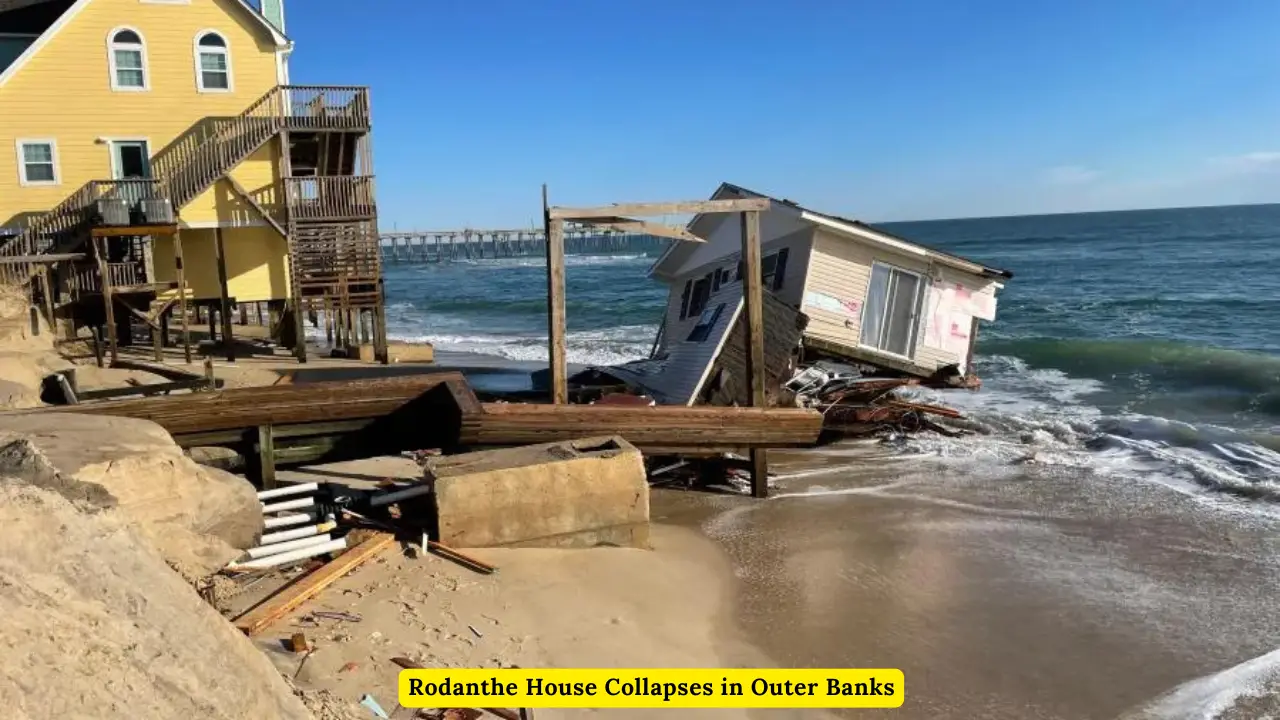The Outer Banks of North Carolina is a picturesque and popular vacation destination, known for its stunning beaches and charming coastal towns. However, the beauty of this region is increasingly under threat from the forces of nature, as demonstrated by the recent collapse of a house in Rodanthe. This tragic event has drawn national attention and serves as a stark reminder of the growing impact of coastal erosion and climate change on vulnerable communities. Rodanthe House Collapses in Outer Banks
The Incident: What Happened in Rodanthe?
On August 17, 2024, a beachfront house in Rodanthe collapsed into the Atlantic Ocean, a dramatic and unsettling scene captured in videos and images that quickly circulated online. The house, once a popular vacation rental, had been precariously perched on the edge of the shoreline, a victim of years of relentless erosion. Despite efforts to fortify the property, the forces of nature ultimately proved too powerful, leading to the building’s destruction.
Coastal Erosion Growing Threat to the Outer Banks
The collapse of the Rodanthe house is not an isolated incident but rather a symptom of a much larger problem affecting the entire Outer Banks region. Coastal erosion is the gradual loss of land along the shoreline due to natural processes such as wave action, currents, and rising sea levels. In the case of the Outer Banks, these processes have been exacerbated by climate change, which has led to more frequent and severe storms, as well as higher sea levels.
According to the North Carolina Coastal Resources Commission, the Outer Banks is experiencing some of the highest rates of coastal erosion in the United States. In some areas, the shoreline is retreating at a rate of several feet per year. This alarming trend is putting homes, businesses, and infrastructure at risk, and it is only expected to worsen in the coming decades.
The Impact of Climate Change on Coastal Communities
The collapse of the house in Rodanthe is a powerful illustration of the impact of climate change on coastal communities. As global temperatures continue to rise, so too do sea levels, leading to more frequent and severe coastal flooding. In addition to rising seas, climate change is also contributing to more powerful hurricanes and tropical storms, which can cause significant damage to coastal properties.
In the case of the Outer Banks, these factors have combined to create a perfect storm of vulnerability. The region’s unique geography—a series of narrow barrier islands—makes it particularly susceptible to the effects of climate change. As sea levels rise and storms intensify, the islands are becoming increasingly difficult to protect, leading to more frequent incidents like the collapse in Rodanthe.
Efforts to Mitigate Coastal Erosion: Are They Enough?
In response to the growing threat of coastal erosion, local and state authorities have implemented a range of measures aimed at protecting the Outer Banks. These include beach nourishment projects, which involve adding sand to eroding beaches to help rebuild the shoreline, as well as the construction of seawalls and other protective structures.
However, these efforts are costly and often only provide temporary relief. Beach nourishment, for example, requires constant replenishment as the added sand is quickly washed away by the tides. Moreover, the construction of seawalls can have unintended consequences, such as disrupting natural sand movement and exacerbating erosion in other areas.
Given the scale of the problem, many experts argue that more drastic measures are needed. This could include strategic retreat, where vulnerable properties are relocated away from the shoreline, or the implementation of more stringent building codes that take into account the increasing risk of coastal erosion and flooding.
The Human Toll: Communities on the Frontline
While the physical impacts of coastal erosion and climate change are evident in events like the Rodanthe house collapse, the human toll is often overlooked. For the residents and property owners in the Outer Banks, the threat of losing their homes and livelihoods is a constant source of anxiety.
In addition to the financial losses associated with property damage, there is also the emotional toll of watching beloved communities and landscapes disappear. For many, the Outer Banks is more than just a vacation destination—it’s a place they call home. The loss of a house to the ocean is not just a financial blow, but a deeply personal one as well.
Looking Ahead: The Future of the Outer Banks
As the effects of climate change continue to intensify, the future of the Outer Banks hangs in the balance. Without significant action to address coastal erosion and rising sea levels, incidents like the Rodanthe house collapse are likely to become more common. This raises important questions about the long-term viability of coastal communities and the difficult decisions that will need to be made in the years to come.
One thing is clear: the status quo is no longer sustainable. As we look to the future, it will be crucial to strike a balance between protecting property and preserving the natural environment. This will require a combination of short-term measures, such as beach nourishment and seawall construction, and long-term strategies, such as strategic retreat and the development of more resilient infrastructure.
In the meantime, the collapse of the house in Rodanthe serves as a powerful reminder of the urgent need to address the root causes of coastal erosion and climate change. Only by taking meaningful action can we hope to protect the Outer Banks and other vulnerable coastal communities from the growing threat of these environmental challenges.
